Macro Calculator
This free, easy-to-use macro calculator gives you your optimal macronutrients and calories. It’s a weight loss or muscle gain calculator for both women and men.
Combine with macro counting or flexible dieting to reach your goals faster.
How to get leaner and stronger?
Our comprehensive macro-based fat loss program shows you how. Learn more
How do macros work?
The foods we eat are made up of three macros (macronutrients). These are carbohydrates (carbs), protein, and fat.
Chicken is high in protein but has no carbs; rice is high in carbs but has very little fat or protein. The three macronutrients provide the body with energy and raw materials for growth and repair.
By calculating the appropriate daily calorie amount for you, we can then break this down into the best macronutrient ratios to achieve weight loss.
Basic steps for macro counting
- Enter details into the calculator
Make sure to choose the correct goal. - Take note of your calories and macros
These will be the targets you are aiming for each day. - Track your macros
Use an app or pre-plan your meals. - Measure results
Don’t use basic weight scales.
Use proper body composition scales (we recommend Renpho) to measure fat and muscle mass changes.
What is a good macro ratio for fat loss or muscle gain?
Your macros should be based on your Total Daily Energy Expenditure (TDEE) and goals.
The calculator defaults to the best macro ratio proven to work for most people.
This ratio is:
- 30% fat
- Protein is 0.65 grams per pound of body weight,
- The remainder is carbs.
Depending on your goal, this will be either a calorie deficit or a surplus.
You can go further and make more adjustments: Perhaps you’re an extreme endomorph and do better with fewer carbs. Or perhaps you have one kidney and need to eat less protein.
You can fine-tune your results with a bit of math. See how to change your macros here.
What is a good protein ratio?
Rather than a percentage, proteins are based on your body weight. Our calculator has three settings:
- Moderate adjusts the ratio to 0.65 grams per pound of body weight.
This is appropriate for sedentary individuals or people with higher body fat percentages. - High is for active people with moderate strength training and an average body fat percentage.
- Maximum will set the ratio to 1 gram per pound.
This amount is good for bodybuilding and gaining muscle mass. You must be doing intense training.
Find out how to fine-tune your protein ratios when counting macros
Fat macro ratio
Set fat at 30% of daily energy expenditure.
Most people do very well with this amount of fat. See more about choosing the best macro fats. Because of high-fat diets like keto, many people are now eating more fat than they need to.
Carbohydrate macro ratio
Once you’ve calculated protein and fat, the remainder of your daily calories should be from carbohydrates.
Carbs fuel your body and workouts – and are the body’s preferred energy source.
If you are coming from a low-carb background, this may seem high. However, according to respected nutritional research, this is a moderate amount of carbs.
If you are eating according to your TDEE, the notion that carbs cause weight gain or stop fat loss is incorrect.
Using as a Calorie Deficit Calculator
As a weight loss calculator, this tool establishes a safe calorie deficit only.
The Lose option puts you in a 20% calorie deficit, promoting safe, steady weight loss.
The best macro ratio for body recomposition
If you want to recompose your body (lose fat and gain muscle simultaneously), then use the body recomposition calculator.
Macro ratio for maintenance
The Maintain button shows you the macro levels to maintain your current weight.
This is great if you have lost weight and don’t want to gain it back.
Macro ratio for muscle gain
The Gain button puts you in a 20% calorie surplus.
The macro breakdown is designed to build muscle fast in conjunction and must be combined with a comprehensive weight training program.
Underweight people can also use it.
TIP: Try starting with the maintenance goal and gradually increasing calories if you want lean muscle gains.
Calculating macros using your body fat percentage
The calculator uses your body weight to determine calories and macros.
However, you can obtain superior results by using your body fat percentage. The calculator allows you to choose which method: Normal for body weight, Lean Mass for fat percentage.
When to choose the Lean Mass Formula
If you are lean (have a low body fat percentage), choose the Lean Mass formula and enter your body fat %.
If you are classified as obese and have a lot of weight to lose, the lean mass formula is superior. You can read more about macro counting and obesity.
Help? Calculate your ideal body weight or get an assessment of your body fat percentage.
Why the difference? Muscle cells burn more calories than fat cells, so the more accurately we measure this, the better your results will be.
How to calculate macros per meal
You can break this down into meals once you’ve calculated your daily macros in the calculator.
Choose from 2 to 6 meals daily to see the macro ratio you can track for each meal. For some people, this is easier, but for others, this is too much detail.
Do what works for you.
Meal Plans
See a 5-day macro-based meal plan. It includes three meals and two snacks per day.
Macro calculator activity level settings
A higher activity level means a higher daily calorie goal.
For example – if you maintain your weight at 2,000 calories per day, adding vigorous daily exercise means you need more calories to maintain your weight.
If you are sedentary and trying to lose weight, adding exercise will increase your daily calorie goal.
The idea seems counter-intuitive, but more energy is required to fuel your workouts. More workouts lead to increasing metabolism; therefore, more fat is burned!
Undereating is one of the leading causes of the weight loss plateau.
So many of our clients previously “hit the wall” with dieting. They would continually reduce calories, stop losing fat, and gain weight when they eat a little more.
Macro counting defeats this by prescribing the right food and calorie levels.
Which activity level do I choose?
- Sedentary: Just regular everyday activity like a bit of walking, a couple of flights of stairs, eating, etc.
- Light: Any activity that burns 200-400 calories (females) or 250-500 calories (males) over your sedentary amount.
- Moderate: Any activity that burns 400-650 calories (females) or 500-800 calories (males) more than your sedentary amount.
- Extreme: Any activity that burns more than 650 calories (females) or more than 800 calories (males) in addition to your sedentary amount.
Other options for determining your calorie burn
- Use our calories burned calculator – it accurately assesses over 380 activities.
- Use a fitness tracker – like a Fitbit or Apple Watch (note that they can overestimate calorie burn).
- Use a suitable app – like MapMyFitness
Why should I eat more when I exercise more?
High physical activity not fueled with enough calories will lead to muscle catabolism (breakdown of muscle fiber).
This lack of nutrition could stall your weight loss, so eat up if you love to exercise!
I’ve got my macros – now what?
Once you’ve identified your target daily macros, you must determine the macros in all your foods.
By tracking them daily, you can reach your recommended macro targets that encourage fat loss, muscle gain, or whatever your goal may be.
You can learn more about the macro counting system and the flexible dieting philosophy. Many people use an app like Myfitnesspal to track macros.
For more specifics on what to eat – see a sample macro meal plan or a list of macros for familiar foods.
View article sourcesSources
- Mifflin, M. D., St Jeor, S. T., Hill, L. A., Scott, B. J., Daugherty, S. A., & Koh, Y. O. (1990). A new predictive equation for resting energy expenditure in healthy individuals. The American Journal of Clinical Nutrition, 51 (2), 241-247. Link
- McArdle, W. D., Katch, F. I., & Katch, V. L. (2010). Exercise physiology: nutrition, energy, and human performance. Lippincott Williams & Wilkins. Link
- Jequier, E. (1994). Carbohydrates as a source of energy. The American journal of clinical nutrition, 59(3), 682S-685S.
- Lemon, P. W., Tarnopolsky, M. A., MacDougall, J. D., & Atkinson, S. A. (1992). Protein requirements and muscle mass/strength changes during intensive training in novice bodybuilders. Journal of Applied Physiology, 73(2), 767-775. study abstract link
- Grundy, S. M. (1999). The optimal ratio of fat-to-carbohydrate in the diet. Annual review of nutrition, 19(1), 325-341. abstract
- Conlin, L.A., Aguilar, D.T., Rogers, G.E. et al. Flexible vs. rigid dieting in resistance-trained individuals seeking to optimize their physiques: A randomized controlled trial. J Int Soc Sports Nutr 18, 52 (2021). https://doi.org/10.1186/s12970-021-00452-2
2,104 Comments


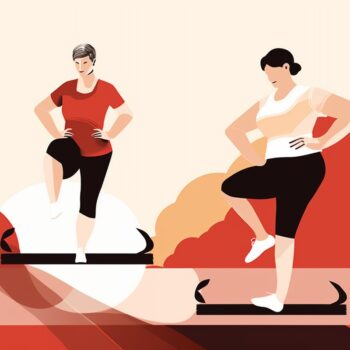 Menopause Macro Calculator
Menopause Macro Calculator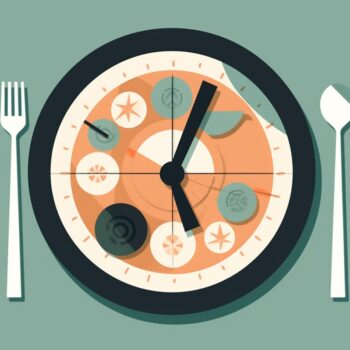 Intermittent Fasting Calculator
Intermittent Fasting Calculator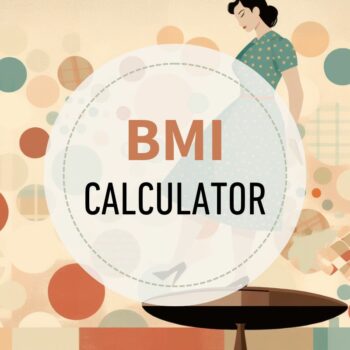 BMI Calculator
BMI Calculator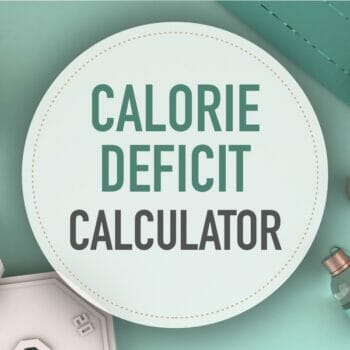 Calorie Deficit Calculator
Calorie Deficit Calculator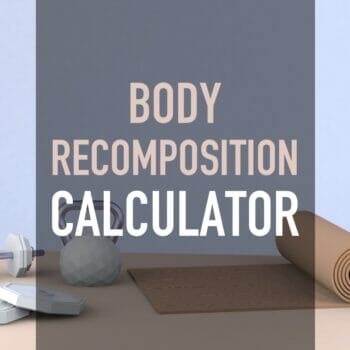 Body Recomposition Calculator
Body Recomposition Calculator
Hi there, I’m not sure if I need to select sedentary or lightly active. I lift weights for about 30 or so minutes a day, 5 days a week plus cardio for about 20 minutes a day, 5 days a week. I get an average of 8,000 steps a day. Other than that, I don’t do too much in terms of being active. Also, is the carb number set in stone? JW. I’d like to lower it a bit. Thank you! ?
Hi Stephanie, It looks like you would be on the borderline of lightly active and moderately active on your exercise days and sedentary on your rest days. You can lower your carbs if you want but don’t be afraid of them. They fuel our workouts and they do not make us fat unless we eat more than what our TDEE allows. See this page if you want to manually calculate your macros or also consider picking up my book. https://healthyeater.com/how-to-calculate-your-macros
Thank you, Ted. I was just wondering about the carbs because I’m a Type 1 Diabetic and I think I’m an endomorph. My Diabetes is so much easier to deal with when I eat a super minimal amount of carbs. And from my understanding, the extra insulin makes you retain fat..? I’m wondering at what point it’s considered “extra”. Anyways, can the macro count work for anyone, regardless of body type, to lose weight?
That makes sense. Yes, I have experienced flexible dieting working for all types of people.
Hi, I was wondering which of the goals is the best for lean muscle improvement. So gaining muscle mass, but not adding a lot of fat at the same time.
Hi Jop, It really depends on where you’re starting from. The gain setting can be a bit too many calories in most cases for lean gains. The muscle gain edition of my book explains this in detail, so please consider getting it.
Carbs- Is this process a “total carb” ratio or net carbs? I was curious if fiber was taken into account or solely on a total carb basis. Say, someone consumed a quest protein bar- more carbs but high in fiber scenario. thanks
Hi Mandy, For the ease of tracking with smartphone apps we use total carbs. But you can use your fiber intake as a buffer in case you go over on your carbs since some of the carb grams in the form of fiber wouldn’t be providing energy.
Thank you
Hi! I’m a 27 year old male. I’m weighing in at 215, and am 6’1. I had to guess on my body fat % for the calculator, but I assume it’s about 20% (worse case scenario). I alway thought that cutting carbs out of your diet was the best thing for losing weight. However – when I select the lose option (for quickest weight loss), I’m told to have 257g of carbs, 177g of protein and 63g of fats with light activity (I might be closer to moderately active – I have started to lift weights 4-5 times a week with cardio mixed in and stand while at work)…do those macros seem right to you guys?
Hi Luke, Yes, they are correct. Most people cut carbs as a way to reduce calories, however, carbs alone do not make you fat. Eating carbs in excess of your TDEE is the problem. So as long as you eat carbs in relation to your total daily energy expenditure they will not cause weight gain. I suggest you read this article to better understand the concept of flexible dieting. https://healthyeater.com/flexible-dieting
I am having a hard time understanding the fat content portion. I always seem to be over on my fat content. I seem to be under the calories and yet still over my fat percentage only each time. If I add a tblsp of Olive Oil that adds a large percentage of fat but I have always been told Olive Oil is a “healthy” fat. I am assuming it doesn’t matter if it is a healthy fat it is still calculated in the same correct?
hoelllo, I’m 23, 5’9 female at 168lbs – I already weight train 5/6 times a week varying between strength and hypertrophy, so I know most of this weight is muscle as I initially am skinny ? But now want to budge my winter coat after an indulgent winter/bulk season and get ready for my summer body, my stats have come up as 2206 calories, 168p, 246c and 61f based on moderate activity being weights 5 times a week and cardio 3 times with a desk job. I have faith in you/these stats particularly the amount of carbs (scary)
Hi Lauren, You would need to be in a calorie deficit if you want to lean out. The setting of Lose 10% will be a slower process but will better preserve muscle mass. The Lose (20% deficit) setting will give you faster results although you won’t gain muscle with this setting.
Hi Ted, those stats are actually based on losing 10% anyway do you think they seem high? Thank you ?
Nope, they are correct for moderate activity and 10%. Make sure you also calculate a sedentary set for your rest days.
Ooo fab thank you! I have faith and trust the process so fingers crossed!
Hi There-
I’m a 39 year old women who is 5’7 and weighs 145 pounds. I want to lose 15 pounds and I would like to follow the Keotone diet. I’m curious to see my calculations. I exercise at BARRE3 3 times a week at 60 minutes and run two days a week running a approx. between 2-4 miles. What do you suggest my protein, calorie, sugar level, and carb intake should be?
Hi Jessica, This calculator isn’t compatible with a ketogenic diet. Flexible dieting is way more sustainable long term and teaches you to eat normally.
Hey! I’m back to my pre-pregnancy weight of 120lbs, but would like to lose another 5lbs and tone. I’m breastfeeding so I entered high protein, and light activity since I do crossfit 3-4x a week, but other than that just stay at home with my daughter. My calculations are 1487 calories per day with 159g carbs, 120g protein, and 41g fat. How many calories should I add for breastfeeding? And do these extra calories go towards protein, carbs, or fats? Thank you!
Hi Savannah, Great job! I wrote an article about that very thing here: https://healthyeater.com/pregnancy-breastfeeding-flexible-dieting-iifym
HELP!!! I am a 2 year survivor of cancer (Leukemia). I gained 50lbs in the recovery process. I am now healthy (besides weight) and desperately needing to lose like 40 to 50 lbs. I am having such a hard time because I am a vegetarian . I am so afraid of depriving my body of essential nutrients and becoming ill again that it has made me gain even more weight. I really wish someone could help me figure out how to stay healthy while dieting and losing weight. I struggle to find the balance of feeding my body and losing weight. I have searched and searched for a vegetarian diet plan and I can not find one that doesn’t have a con of malnutrition. 🙁 I am only 35 and I want to live a healthy long life. I have been through so much and I am a fighter! I am determined to lose this weight. I refuse to take any weight loss pills or crash style diets. I do supplement with a plant based meal replacement, B-12 and vitamin D? But, I don’t even know it that is the right thing to do 🙁 I have tried a few times to go to a nutritionist, no luck! I guess I still havent met the right person to really help me! Any help or guidance would mean the world to me! Thanks- Trisha
Hi Trisha, Awesome to hear of your victory over Leukemia! I think flexible dieting is the right way to go. You’ll learn how many calories your body needs to safely lose weight and be assured that you are getting the correct macros to maintain muscle mass and good health. You can eat what you love on the diet so vegetarian foods are acceptable. There are no required or forbidden foods. I hope you’ll consider and we have a lot of resources on the site to help you get started.
Hi! I am new to the macro game. I am looking to lose around 20lbs. I am currently at 156lbs at 5’5″. I do plan on buying the book as it seems to come with a lot of helpful information. I used the macro calculator and came to 174c/132p/45f. This seems pretty reasonable. I have been using MyFitnessPal for a few weeks now as well. I was wondering if I need to adjust my macros on days that I workout or will I lose the same amount of weight if I keep my macros the same?
Hi Peyton, Welcome and great to hear! I’m a firm believer in eating according to how much energy your body needs/uses during a particular day and I found that people get faster results if they have a couple sets of macros. At least one for rest days and one for exercise days. Some people even use 3 sets or do a fluid approach by tracking exercise along with food intake.
Hello, my eating is somewhat sporadic because of not paying attention and never eating much any way. Most days I would only eat around 1300 to 1500 calories (guessing) with intense exercise, then occasionally I would have some days with probably 2000 calories. I recently started tracking my macros because I have had trouble staying lean and losing weight, I was wondering if my body will respond differently now that I am eating 2200 (approximately) a day, I was told that. I notice I feel great over the last few days energy/ focus wise and my muscles seems more filled out but definitely some extra weight. I am a 23 year old male, 6’1″ and about 180.
I appreciate any feed back, just worried my body will retain the weight
Hey there, undereating consistently, coupled with intense exercise can mess with your metabolism. It may take a few weeks of eating the right amount consistently before your metabolism gets back to normal. It’s a good thing you are tracking now, a much healthier approach!.If you want to lose fat, you’ll need to be in a safe calorie deficit and it looks like you’ve planned for that in your macro calculations. It’s also helpful to have a rest day set of macros. Just give yourself some time to fully adjust.
Thank you for the speedy response Ted, much appreciated. Do you suggest my rest day macros be two to three hundred calories higher than my normal workout days? Still having trouble with all of the percentages!
No, a rest day should be lower in calories than a workout day. Use the sedentary setting in the calculator. I also suggest that you check out my book as it will tell you everything you need to know to be successful. https://healthyeater.com/macro-solution
I have 2 numbers. Im 64 inches 181 lbs female. Lightyear active. I put my number in the calculator and I got 164c/149p/46f and I bought the book, manually got 247c/149p/57f. I’m not sure which to use. I want to loose another 35 lbs.
Hi Catherine, It looks like you may have a math error. The calculator uses the same formula as I have in the book. I’m happy to help you in the support forum that you paid for further. Can you submit a request there? Thanks, Ted